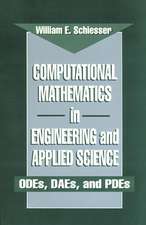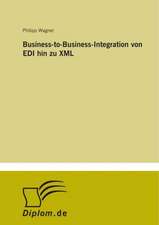Modeling of Post-Myocardial Infarction: ODE/PDE Analysis with R
Autor William E. Schiesseren Limba Engleză Paperback – 25 aug 2023
The system of six ODEs does not include a spatial aspect of an MI in the cardiac tissue. Therefore, the ODE model is extended to include a spatial effect by the addition of diffusion terms. The resulting system of six diffusion PDEs, with x (space) and t (time) as independent variables, is integrated (solved) by the numerical method of lines (MOL), a general numerical algorithm for PDEs.
- Includes PDE routines based on the method of lines (MOL) for computer-based implementation of PDE models
- Offers transportable computer source codes for readers in R, with line-by-line code descriptions as it relates to the mathematical model and algorithms
- Authored by a leading researcher and educator in PDE models
Preț: 843.40 lei
Preț vechi: 1108.72 lei
-24% Nou
Puncte Express: 1265
Preț estimativ în valută:
161.38€ • 168.95$ • 133.53£
161.38€ • 168.95$ • 133.53£
Carte tipărită la comandă
Livrare economică 31 martie-14 aprilie
Preluare comenzi: 021 569.72.76
Specificații
ISBN-13: 9780443136115
ISBN-10: 0443136114
Pagini: 144
Dimensiuni: 191 x 235 mm
Editura: ELSEVIER SCIENCE
ISBN-10: 0443136114
Pagini: 144
Dimensiuni: 191 x 235 mm
Editura: ELSEVIER SCIENCE
Public țintă
The primary audience includes researchers in computational modelling and computational biology, biomedical engineers, applied mathematicians, and computer scientists.Other interested audiences will be comprised of researchers, clinicians, and developers in the field of cardiology.
Cuprins
1. ODE Model Development
2. ODE Model Implementation
3. PDE Model Formulation and Implementation
4. PDE Model Temporal Derivative Analysis
5. Analysis of the PDE Model Terms
Appendix A: Functions dss004, dss044
2. ODE Model Implementation
3. PDE Model Formulation and Implementation
4. PDE Model Temporal Derivative Analysis
5. Analysis of the PDE Model Terms
Appendix A: Functions dss004, dss044
















